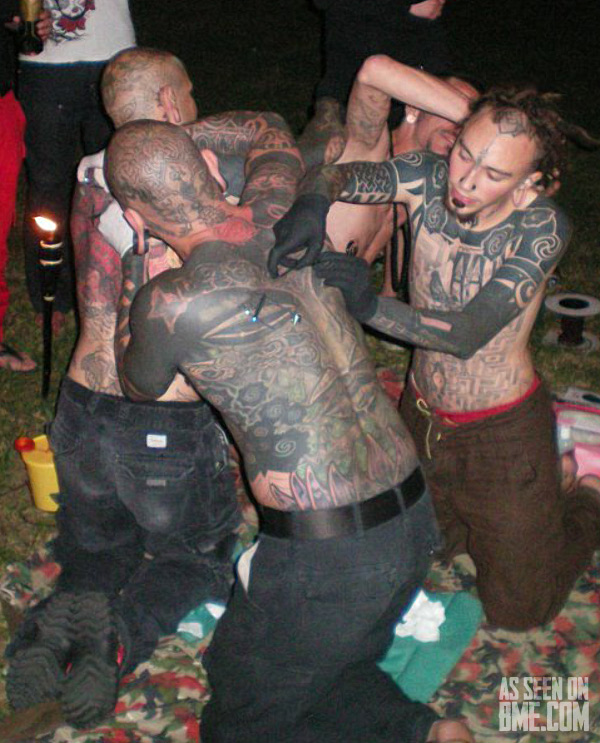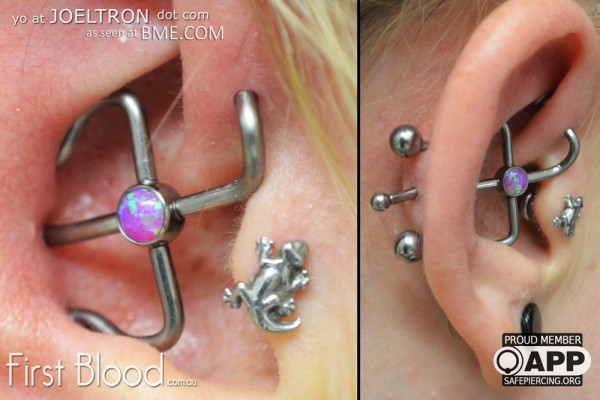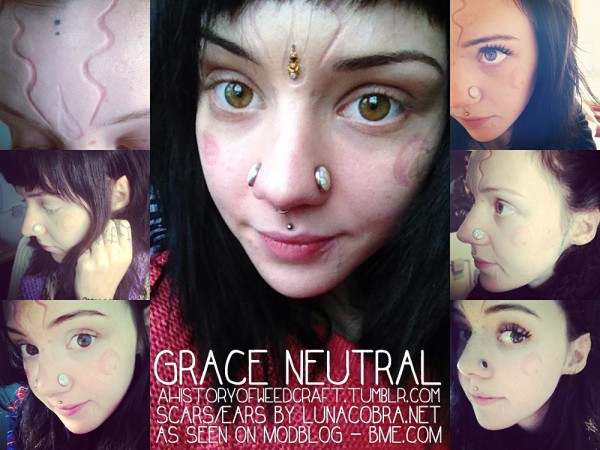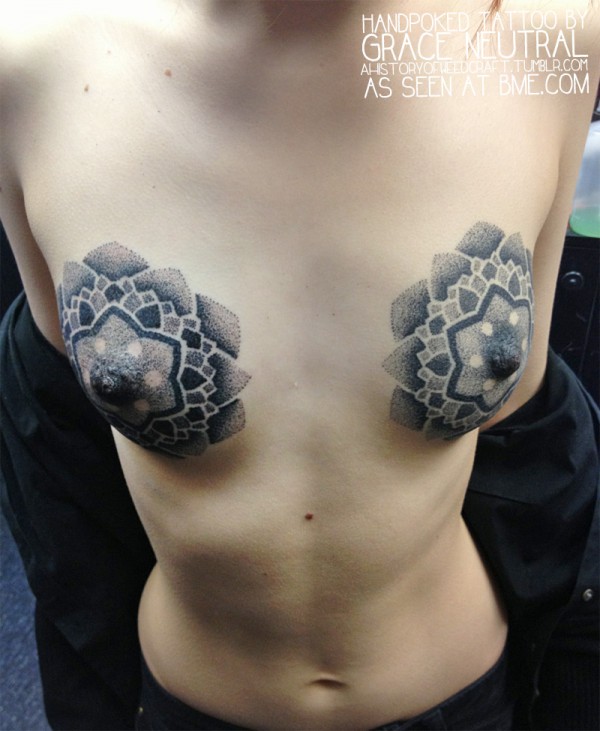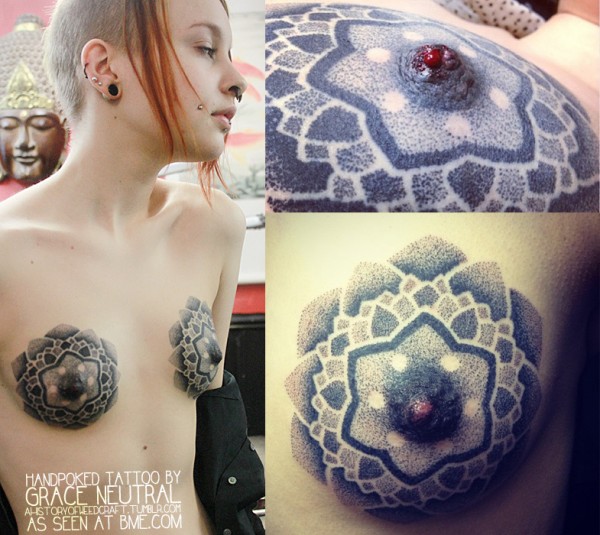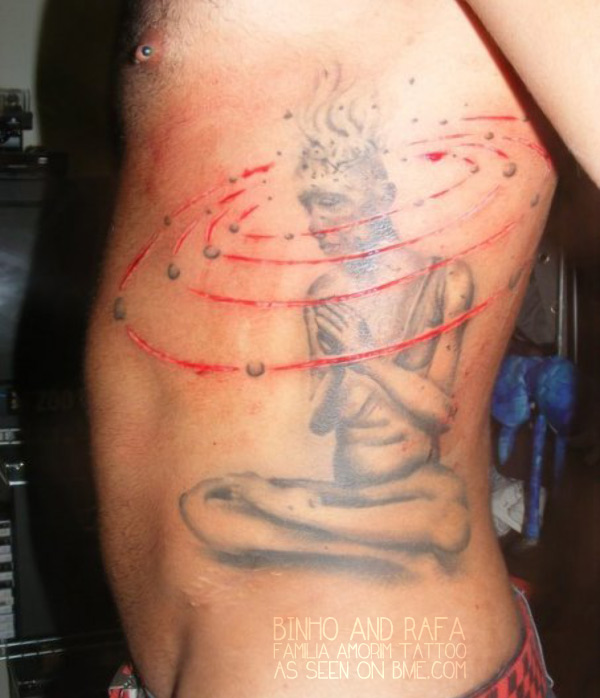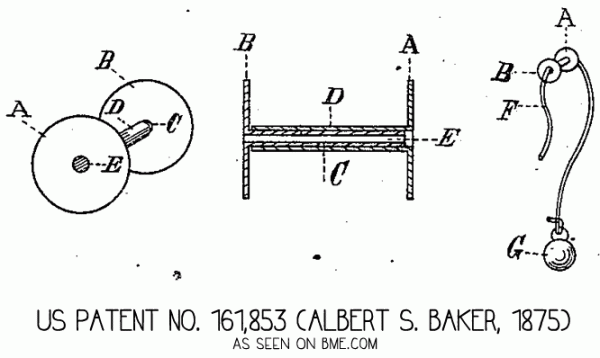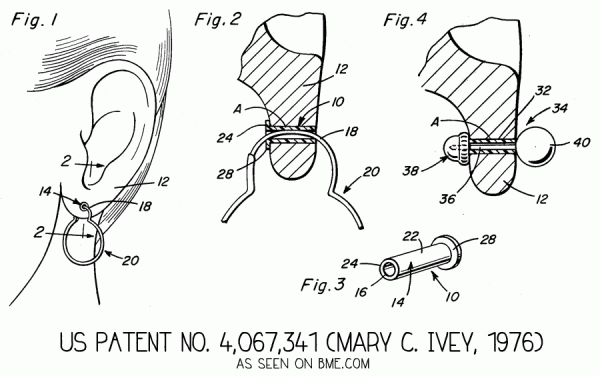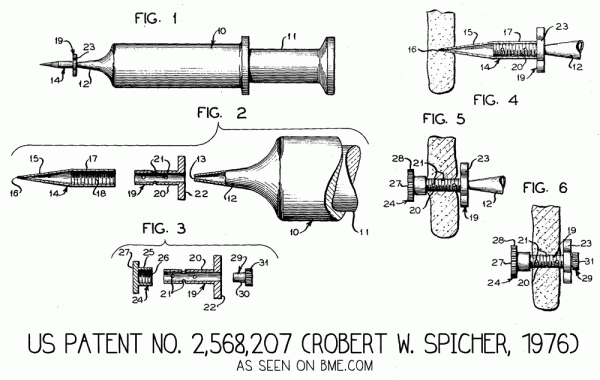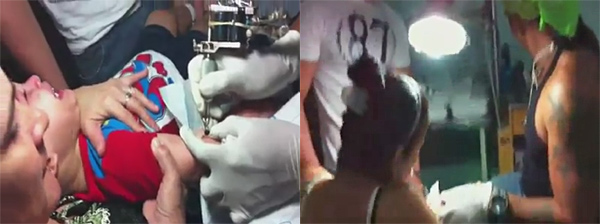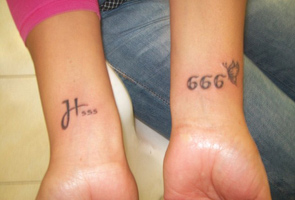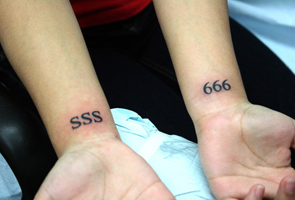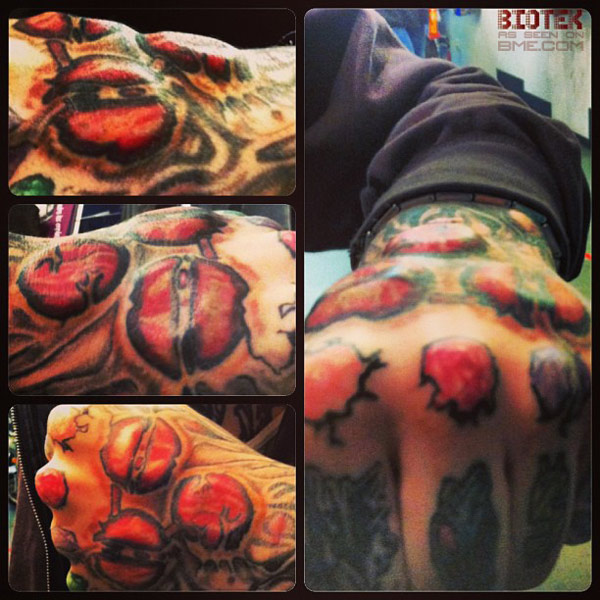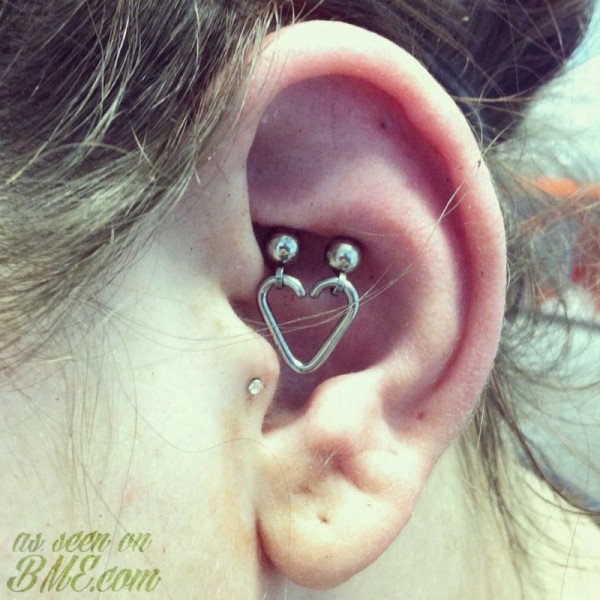I’m sorry for waiting longer than I should have to write this; after the recent deaths of other body modification figures like ManWoman and Stalking Cat it’s difficult to have to follow those up with the loss of another significant body modification pioneer. Unfortunately I must write that Erl Douglas Van Aken II (see Erl on the BME wiki and his web page) passed away at his home after a richer life than anyone could ask for.
Erl was born in Brewer, Maine, and then moved to California at age four where he grew up in Orange County, a region he characterized as having “a very narrow band of perception, and being a person of ‘different’ thinking, not subject to peer pressure, I was not well… tolerated.” Always forward thinking, in the early sixties he worked in the space program at NASA, Bell Labs, JPL, and similar institutions where he worked on some of the first satellite programs, as well as Mercury, Gemini, and the Apollo program where he contributed significantly to the rover (moon buggy) — “in that sense I’m on the moon,” he said.
Wanting to explore a wider range of expression and not really fitting in to an increasingly “professional” environment, Erl left to become a multi-media artist, working in nearly every medium — as well as doing a lot of “motorcycle riding and hell raising during this period as well — you know, sex, drugs and rock’n’roll”, a dangerous lifestyle that would nearly cost him his life “on more than one occasion”. In the mid-90s (by which point he was a well-established body modification icon already) he began modelling for fine art, which lead to him joining the Screen Actors Guild (usually credited as Erl Van Douglas, although many of his non-speaking roles are uncredited, such as his 1996 appearance in The Cable Guy, the first movie I remember seeing him in — and my favorite thing about that movie). Lance Richlin, an artist who recently painted a series of portraits of Erl wrote me saying,
“Erl was no ordinary man. He was a Mystic. He had deep insight. The body modification was literally only the surface of the man. I didn’t even notice it after the first few encounters. When he was younger, he was a dangerous fellow. But he became a very gentle and compassionate man in old age.”
Although body modification was only a small part of a much more complex personality, Erl’s role in the world of body modification was significant. While the name has fallen out of fashion in favor of the anatomical moniker “bridge piercing”, for a long time “Erl” was what the piercing was called (as in “I’d like to get an Erl piercing”), as Erl was the first person known to wear it (done for him by The Gauntlet). Erl wasn’t only an early piercing and tattoo fan and innovator — he was also one of the first heavy body modification enthusiasts whose focus was significantly aesthetic. There have always been heavy mod practitioners, but the vast majority until the mid-nineties were doing it in private, almost exclusively in a sexual realm. Erl on the other hand was not only one of the first people in the West to explore surgical body mods on an artistic level, but also to do it “out”, sharing his love for it with those around him — for example, his radical and way, way, ahead of its time bipedical flap procedure was documented in Body Art magazine. Thereby he influenced many of the early body modification artists, as well as inspiring other serious enthusiasts, and changed culture more than he probably realized.
On the left, a recent painting of Erl by artist Lance Richlin (visit him at lancerichlin.com), and on the right, a pre-firing sculpture of Erl by Nicholas Mestanas (visit him on Facebook) — note that the piece includes Erl’s chest implants and bipedical flap (the artist was planning on adding the piercings post-firing).
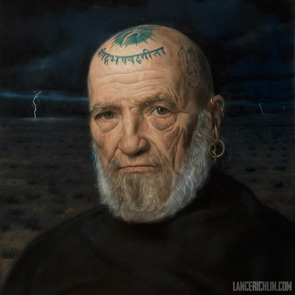
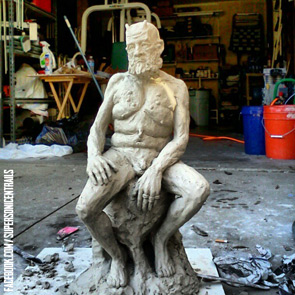
Finally a few photoshoot images from Erl’s webpage — visit justerl.com to explore more.
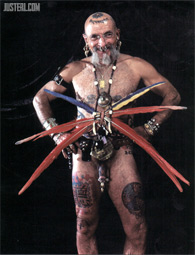
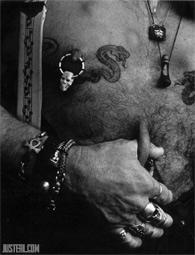

Whether the name “Erl piercing” returns or falls out of our language, Erl’s pioneering exploration of body modification and the impact it had on popular culture lives on in hundreds of thousands of people’s lives — to say nothing of the myriad of other positive ways he touched those around him.
